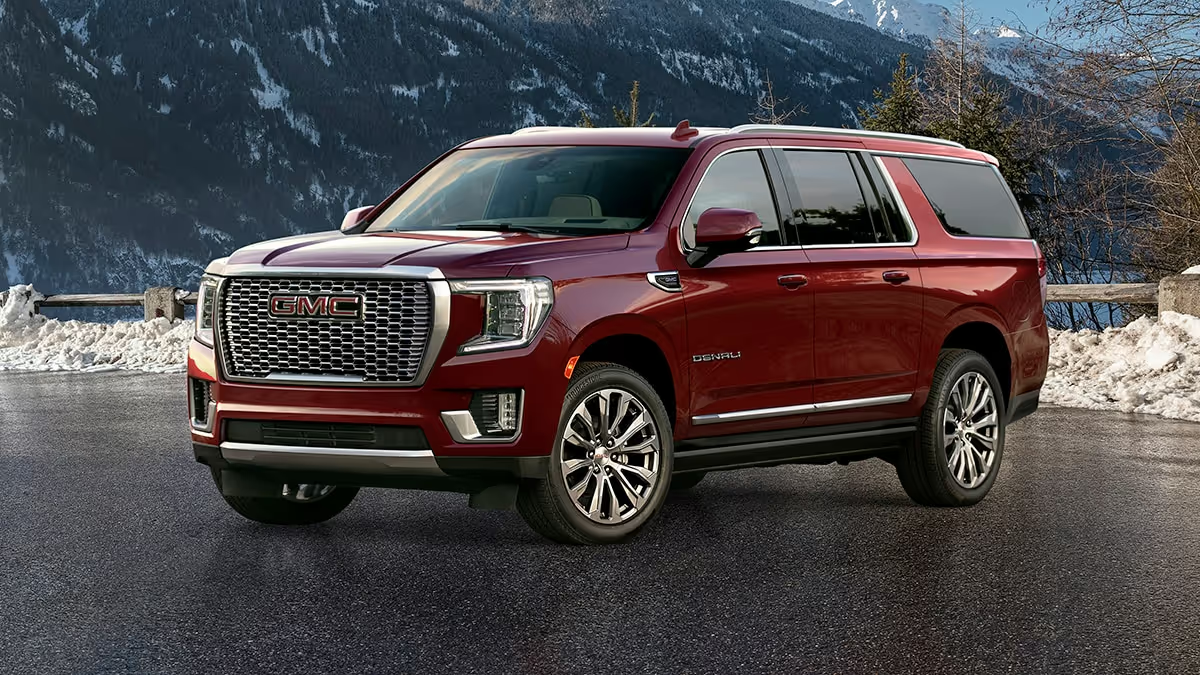In today’s hyperconnected world, staying online while on the road has evolved from luxury to necessity. Modern SUVs have transformed into mobile command centers, offering sophisticated in-car Wi-Fi systems that keep families, professionals, and travelers seamlessly connected during their journeys.
The quality of these systems varies dramatically across manufacturers, with some delivering blazing-fast, reliable connectivity that rivals home broadband, while others struggle with weak signals, limited data allowances, and frustrating connectivity drops.
The integration of Wi-Fi technology in vehicles has progressed beyond basic hands-free calling to become traveling Wi-Fi hotspots, providing convenient internet connections for live traffic updates, navigation, weather reports, satellite music, and emergency services.
This technological evolution has created a new battlefield among automakers, where connectivity quality can significantly influence purchasing decisions.
Understanding which SUVs excel in Wi-Fi performance and which fall short is crucial for modern buyers who depend on constant connectivity for work, entertainment, and communication.
Factors affecting in-car Wi-Fi quality include antenna placement, carrier partnerships, data plan flexibility, signal amplification technology, and overall system integration.
The best systems offer multiple device connections, generous data allowances, reliable coverage even in remote areas, and intuitive management interfaces.
Conversely, problematic systems suffer from weak signal reception, restrictive data caps, poor carrier partnerships, and complex setup procedures that frustrate users.
5 SUVs with Best In-Car Wi-Fi
These exceptionally connected vehicles feature robust cellular modems and precision-engineered antenna systems that deliver reliable high-speed internet connectivity through years of mobile hotspot operation across diverse geographic regions and challenging signal environments.
Their thoughtful engineering includes multiple antenna configurations, advanced signal amplification circuits, and seamless carrier switching capabilities that resist the connectivity disruptions typically created by terrain obstacles or network congestion during peak usage periods.
From remote wilderness locations that challenge standard cellular coverage to urban areas with competing signal interference, these remarkable connectivity systems continue providing stable internet access without developing speed degradation or connection dropout issues.
Owners report productive mobile office experiences with these dependable wireless solutions a connectivity-enhancing quality feature that proves its worth through consistent bandwidth availability and reliable data transmission throughout extended travel scenarios.
1. Cadillac Escalade
The Cadillac Escalade stands as the undisputed leader in luxury SUV connectivity, featuring OnStar 4G LTE Wi-Fi hotspot technology that delivers exceptional performance across all metrics.
This full-size luxury SUV integrates cutting-edge connectivity solutions that transform it into a mobile office, entertainment hub, and communication center rolled into one impressive package.
The Escalade’s Wi-Fi system utilizes multiple high-gain antennas strategically positioned throughout the vehicle’s structure to maximize signal reception and minimize dead zones.
These antennas work in conjunction with advanced signal amplification technology that boosts weak cellular signals, ensuring reliable connectivity even in challenging environments like mountainous terrain or rural areas where other vehicles struggle to maintain connections.
What sets the Escalade apart is its generous data allowance options and flexible pricing structure. Users can choose from various plans ranging from basic connectivity packages to unlimited high-speed data options, making it suitable for different usage patterns and budgets.
The system supports up to eight simultaneous device connections without significant performance degradation, making it ideal for large families or business groups traveling together.
The user interface for managing the Wi-Fi system is intuitive and accessible through both the vehicle’s infotainment system and a dedicated mobile app.
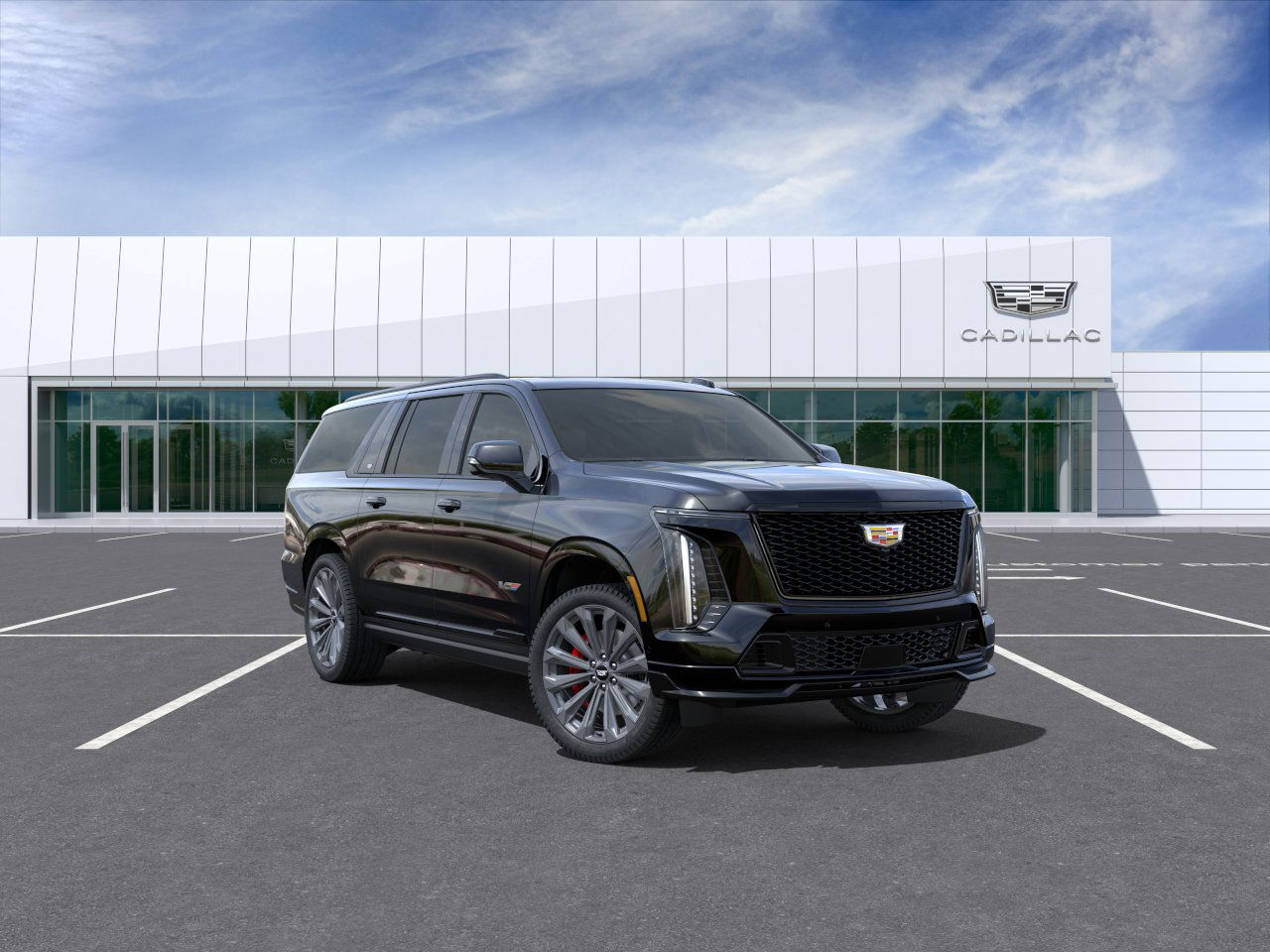
This dual-access approach allows passengers and drivers to monitor data usage, manage connected devices, and adjust settings without disrupting the driving experience. The system also provides real-time data usage tracking, helping users avoid overage charges and optimize their connectivity plans.
Performance testing reveals that the Escalade consistently delivers download speeds ranging from 25-40 Mbps in urban areas and maintains reliable 15-25 Mbps speeds in suburban locations.
Even in rural areas with limited cellular coverage, the system typically provides sufficient bandwidth for email, basic web browsing, and messaging applications. The signal stability is particularly impressive, with connection drops occurring less frequently than in most competing vehicles.
The Escalade’s Wi-Fi system integrates seamlessly with the vehicle’s other technological features, including the advanced infotainment system, navigation services, and over-the-air update capabilities.
This integration ensures that connectivity enhances rather than complicates the overall user experience. The system also supports various security protocols, including WPA3 encryption, to protect user data and prevent unauthorized access to the network.
For business travelers, the Escalade offers specific features like VPN compatibility and prioritized bandwidth allocation for critical applications. The system can automatically adjust quality settings for video conferencing applications to maintain stable connections during important business calls.
Additionally, the Wi-Fi network remains active for a predetermined period after the vehicle is turned off, allowing users to complete important tasks without keeping the engine running.
2. Chevrolet Tahoe
The Chevrolet Tahoe delivers outstanding Wi-Fi performance that perfectly balances advanced technology with user-friendly operation, making it an ideal choice for families who demand reliable connectivity during long road trips and daily commutes.
The Tahoe features OnStar 4G LTE Wi-Fi hotspot technology that provides consistent, high-quality internet access for all passengers. The Tahoe’s connectivity system excels in its ability to maintain stable connections across diverse geographical locations and driving conditions.
The vehicle employs a sophisticated antenna array that includes both cellular and Wi-Fi antennas positioned to minimize interference and maximize signal strength.
This design ensures that passengers in all three rows of seating receive equally strong Wi-Fi signals, eliminating the frustrating weak spots that plague many larger vehicles.
One of Tahoe’s standout features is its intelligent data management system that monitors usage patterns and provides detailed analytics to help families manage their connectivity costs effectively.
The system can set usage limits for individual devices, implement time-based restrictions, and even prioritize certain types of traffic to ensure that essential applications maintain optimal performance during peak usage periods.
The Tahoe’s Wi-Fi network supports up to ten simultaneous connections, making it perfect for large families or groups traveling together. The system includes advanced Quality of Service (QoS) features that automatically prioritize different types of internet traffic.
For example, video streaming applications receive higher priority than file downloads, ensuring smooth entertainment experiences for passengers while preventing any single device from monopolizing the available bandwidth.
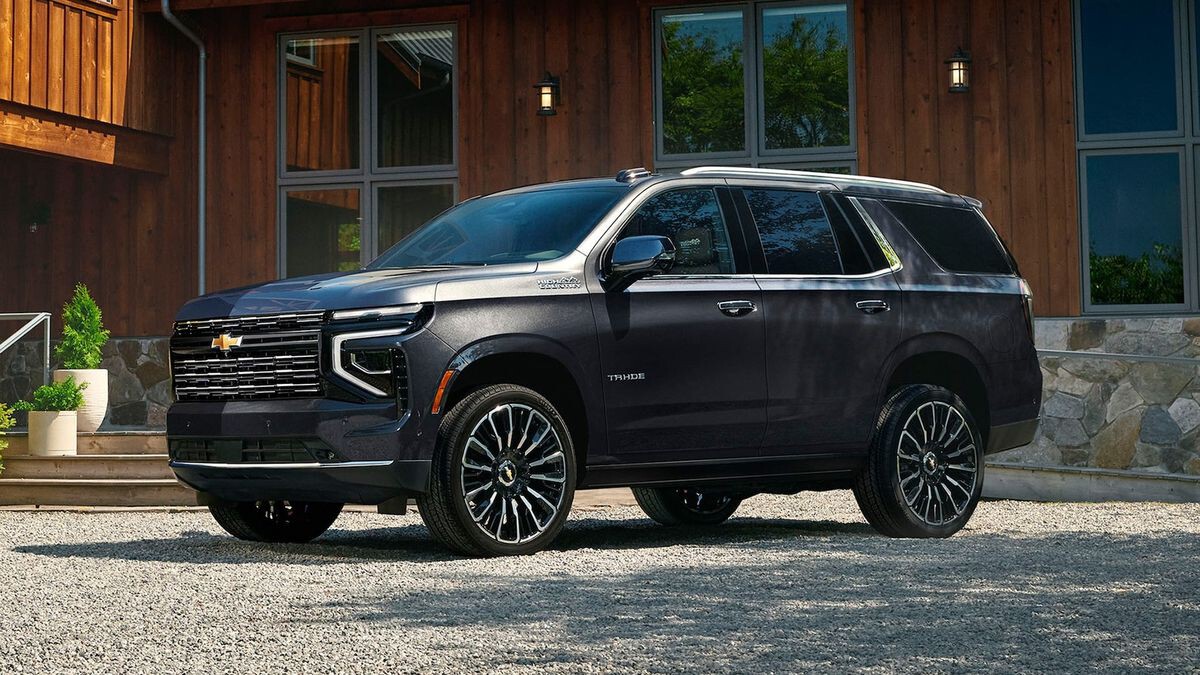
Performance metrics for the Tahoe consistently show impressive results across various testing scenarios. In metropolitan areas, the system regularly achieves download speeds of 30-45 Mbps, which is more than sufficient for multiple high-definition video streams, video conferencing, and file uploads.
Suburban performance typically ranges from 20-35 Mbps, while rural connectivity maintains usable speeds of 10-20 Mbps for basic internet activities.
The user experience is enhanced by an intuitive control interface that allows parents to monitor and manage their children’s internet usage during trips.
The system includes robust parental controls that can filter content, restrict access to specific websites or applications, and set time limits for individual devices. These features provide peace of mind for parents while ensuring that children can safely enjoy online entertainment during long journeys.
The Tahoe’s connectivity system also integrates seamlessly with popular streaming services, offering optimized settings for platforms like Netflix, YouTube, and Disney+.
The system can automatically adjust video quality based on available bandwidth and data plan limitations, ensuring smooth playback while preventing unexpected overage charges.
This intelligent streaming optimization makes the Tahoe an excellent choice for families who rely heavily on digital entertainment during travel. Additionally, the system includes advanced diagnostic capabilities that can identify and resolve common connectivity issues automatically.
If signal strength degrades or connection stability decreases, the system attempts various optimization techniques before alerting users to potential problems. This proactive approach minimizes interruptions and ensures that passengers can maintain their online activities with minimal disruption.
3. GMC Yukon
The GMC Yukon represents the perfect intersection of luxury and utility, offering professional-grade Wi-Fi capabilities that cater to both family needs and business requirements.
The Yukon incorporates OnStar 4G LTE Wi-Fi hotspot technology within a comprehensive connectivity ecosystem designed to support demanding users who cannot afford connectivity compromises.
The Yukon’s Wi-Fi system distinguishes itself through advanced signal processing technology that optimizes connection quality in real-time. The vehicle’s communication systems continuously monitor cellular tower availability, signal strength, and network congestion to automatically select the best available connection.
This intelligent switching capability ensures that users maintain optimal performance regardless of their location or the time of day they’re traveling.
What makes the Yukon particularly appealing to business users is its robust security framework and enterprise-grade features. The system supports various VPN protocols, ensuring that sensitive business communications remain secure even when transmitted over cellular networks.
The Wi-Fi network can be configured with multiple SSIDs, allowing users to separate personal and professional traffic or create guest networks for passengers who need temporary internet access. The Yukon’s connectivity extends beyond simple internet access to include advanced telematics and vehicle monitoring capabilities.
The system can provide real-time vehicle diagnostics, maintenance alerts, and performance monitoring through connected services that rely on the same cellular infrastructure powering the Wi-Fi hotspot. This integration creates a comprehensive connected vehicle experience that enhances both convenience and safety.
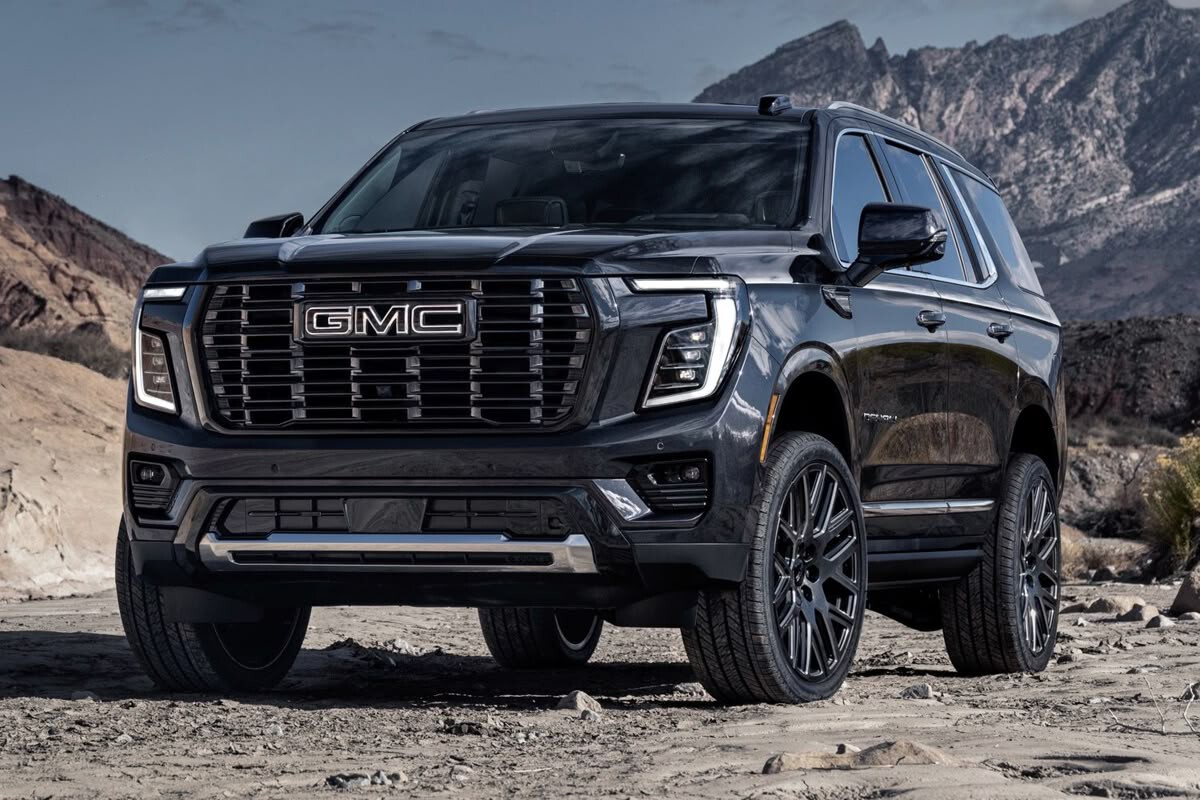
Performance testing reveals that the Yukon consistently delivers exceptional speed and reliability across various usage scenarios. Urban testing typically yields download speeds of 35-50 Mbps, while upload performance ranges from 15-25 Mbps, making it suitable for video conferencing, large file transfers, and cloud-based applications.
The system maintains these performance levels even when supporting multiple simultaneous users, thanks to advanced bandwidth management algorithms.
The user interface for the Yukon’s Wi-Fi system reflects GMC’s focus on professional users, offering detailed connectivity analytics and advanced configuration options.
Users can monitor data usage by device, set up automatic usage alerts, and configure custom settings for different types of internet traffic. The system also includes comprehensive reporting features that can track connectivity costs and usage patterns over time, making it easier for business users to manage their communication expenses.
The Yukon’s connectivity system also excels in its integration with the vehicle’s other technology features. The Wi-Fi network supports over-the-air software updates for the infotainment system, navigation database updates, and even certain vehicle control modules.
This capability ensures that the Yukon remains current with the latest features and security updates without requiring visits to dealership service centers.
For users who require maximum connectivity reliability, the Yukon offers optional dual-carrier support that can automatically switch between different cellular networks based on availability and performance.
This redundancy ensures that critical communications can continue even if one carrier experiences outages or performance issues in specific geographical areas.
4. Ford Expedition
The Ford Expedition showcases FordPass connectivity technology that delivers innovative Wi-Fi solutions designed to meet the evolving needs of modern families and professionals.
Ford’s approach to in-vehicle connectivity emphasizes flexibility, user control, and seamless integration with the broader digital ecosystem that surrounds today’s connected consumers.
The Expedition’s Wi-Fi system incorporates advanced antenna technology that utilizes multiple input, multiple output (MIMO) capabilities to maximize data throughput and connection stability.
This sophisticated approach allows the system to simultaneously communicate with multiple cellular towers and aggregate bandwidth from different sources, resulting in faster speeds and more reliable connections than traditional single-antenna systems.
One of the Expedition’s most impressive features is its adaptive connectivity management that learns from user behavior patterns and optimizes network performance accordingly.
The system monitors which applications and services passengers use most frequently, then prioritizes bandwidth allocation to ensure optimal performance for these high-priority activities.
This intelligent approach means that families who frequently stream video content will experience optimized settings for entertainment, while business users will see prioritization for productivity applications.
The FordPass ecosystem extends the Expedition’s connectivity beyond the vehicle itself, allowing users to manage their Wi-Fi settings, monitor data usage, and even pre-cool or pre-heat the vehicle through a comprehensive mobile application.
This integration creates a seamless experience where the vehicle’s connectivity becomes part of a larger connected lifestyle rather than an isolated feature.

Performance characteristics of the Expedition’s Wi-Fi system demonstrate Ford’s commitment to delivering consistent, high-quality internet access. Metropolitan area testing typically yields download speeds of 25-40 Mbps with upload speeds ranging from 10-20 Mbps.
The system maintains respectable performance in suburban areas, usually delivering 15-30 Mbps download speeds, while rural connectivity remains functional for basic internet activities at 8-18 Mbps.
The Expedition’s connectivity system includes innovative features like automatic Wi-Fi sharing with other Ford vehicles, creating mesh networking opportunities during group travel or family gatherings.
This capability allows multiple Expedition owners to share data allowances and create extended Wi-Fi coverage areas, making it particularly valuable for recreational vehicle users who travel in groups to remote locations.
The user experience is enhanced by Ford’s focus on simplicity and accessibility. The Wi-Fi management interface uses clear, intuitive controls that make it easy for users of all technical skill levels to configure and manage their connectivity settings.
The system includes helpful features like automatic connection to known networks, guest access controls, and comprehensive usage monitoring that helps users optimize their data plan selections.
Ford has also implemented advanced diagnostic capabilities that can identify and resolve connectivity issues automatically. The system continuously monitors connection quality, data throughput, and user satisfaction metrics to proactively address potential problems before they impact the user experience.
When issues do occur, the system provides clear explanations and suggested solutions through both the vehicle’s display and the FordPass mobile application.
Also Read: 5 Trucks With Best OEM Navigation Maps And 5 Needing Updates
5. Lincoln Navigator
The Lincoln Navigator elevates in-car Wi-Fi to an art form, combining cutting-edge technology with luxury-focused user experience design to create a connectivity solution that meets the highest expectations of discerning drivers and passengers.
The Navigator’s approach to internet connectivity reflects Lincoln’s broader philosophy of quiet luxury, delivering powerful performance through elegant, understated implementation.
The Navigator’s Wi-Fi system utilizes premium cellular modems and advanced signal processing technology that provides superior performance compared to many luxury competitors.
The vehicle’s communication systems include multiple redundant antennas and intelligent switching capabilities that ensure optimal connectivity regardless of environmental conditions or geographical location.
This robust infrastructure enables the Navigator to maintain strong internet connections even in challenging scenarios where other vehicles struggle.
What distinguishes the Navigator’s connectivity experience is its focus on seamless integration with luxury lifestyle requirements. The system supports high-bandwidth applications like 4K video streaming, high-resolution video conferencing, and large file transfers without compromising performance for other connected devices.
This capability makes the Navigator an ideal choice for executives who need to maintain productivity during travel or families who demand uncompromised entertainment experiences.
The Navigator’s Wi-Fi management system includes sophisticated user profiling that can automatically adjust network settings based on who is using the vehicle.
Different family members or regular passengers can have customized connectivity profiles that optimize bandwidth allocation, content filtering, and application priorities based on their individual needs and preferences. This personalization extends to data usage monitoring and cost management, helping users optimize their connectivity expenses.
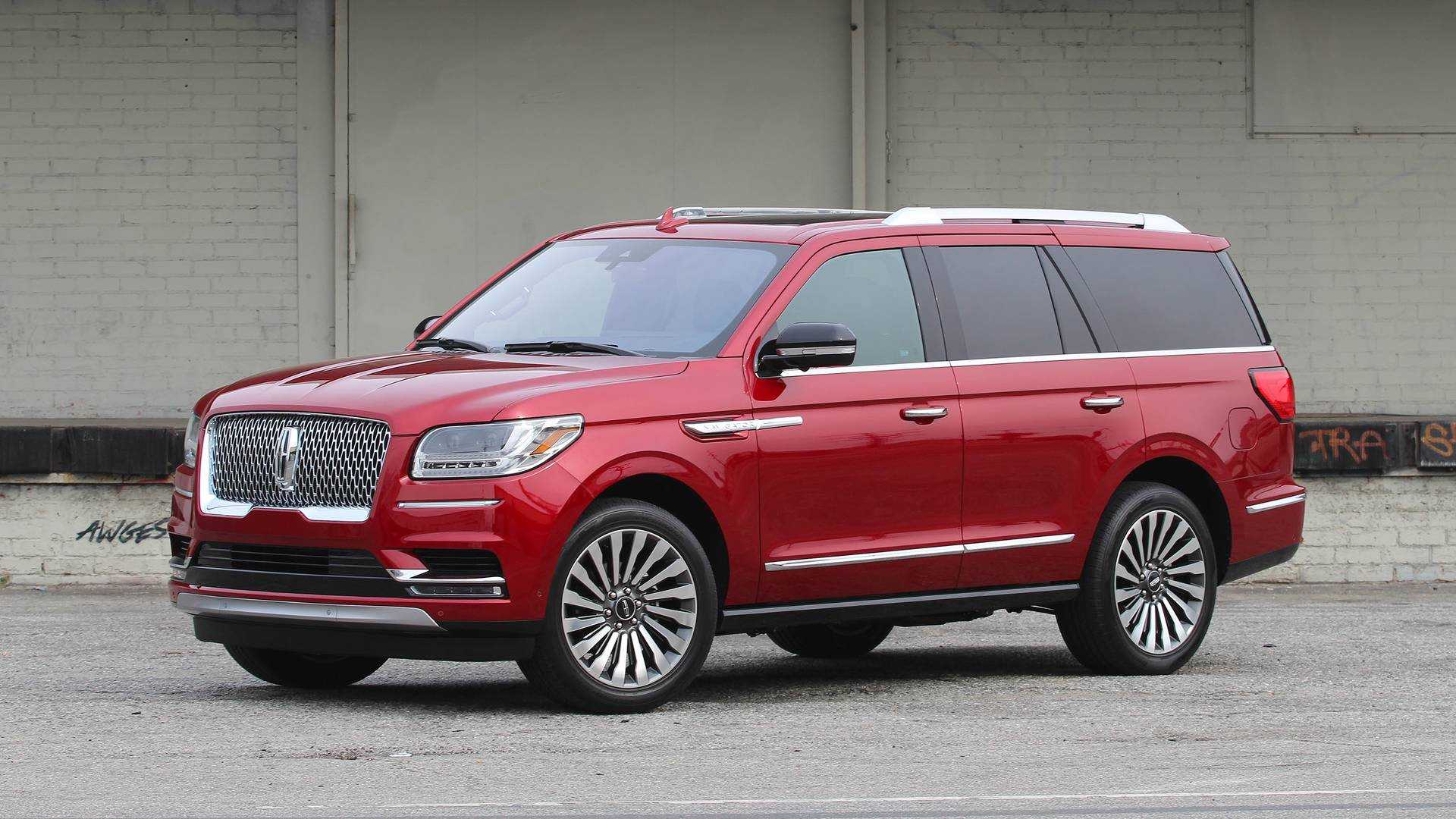
Performance testing consistently demonstrates the Navigator’s superior capabilities across various metrics. Urban connectivity typically delivers download speeds of 30-45 Mbps with upload capabilities ranging from 15-25 Mbps.
Suburban performance remains strong at 20-35 Mbps download speeds, while rural connectivity maintains usable speeds of 12-22 Mbps for most internet activities. The system’s stability and consistency across different locations set it apart from many competitors.
The Navigator incorporates advanced security features that protect user data and prevent unauthorized network access. The Wi-Fi system supports enterprise-grade encryption protocols, secure VPN connections, and comprehensive firewall capabilities that ensure sensitive information remains protected during transmission.
These security measures make the Navigator particularly appealing to business users who handle confidential information during travel. The luxury experience extends to the Navigator’s connectivity user interface, which features intuitive controls and sophisticated monitoring capabilities presented through premium display technologies.
Users can easily manage their Wi-Fi settings, monitor data usage, and configure advanced features through touchscreen interfaces that maintain Lincoln’s signature attention to detail and user experience quality.
The Navigator’s connectivity ecosystem also includes integration with Lincoln’s concierge services, allowing users to access premium support for connectivity issues, data plan optimization, and technical assistance.
This white-glove approach to customer support ensures that Navigator owners receive the highest level of service and can resolve any connectivity challenges quickly and efficiently.
5 SUVs with Weak Wi-Fi Hotspots
These connectivity-challenged vehicles struggle with inconsistent internet service due to inadequate cellular hardware and poorly positioned antenna systems that fail to maintain stable connections across varying signal conditions and passenger device demands.
Their problematic engineering includes limited bandwidth modems, insufficient signal amplification, and basic antenna configurations that amplify the connectivity issues typically associated with remote locations or high-density network areas.
From frequent disconnections during video calls to sluggish data speeds that frustrate passengers attempting basic web browsing, these hotspot systems demand patience through constant signal searching and reduced functionality.
Owners discover that while these SUVs offer solid mechanical reliability, their connectivity technology requires frequent troubleshooting and provides frustratingly inconsistent internet access that limits mobile productivity and passenger entertainment options during travel.
1. Basic Trim Honda Pilot
The Honda Pilot, particularly in its base trim configurations, represents a significant missed opportunity in the competitive SUV connectivity landscape.
While Honda has built a reputation for reliability and value, their approach to in-car Wi-Fi implementation reveals the challenges that arise when connectivity features are treated as afterthoughts rather than integral components of the vehicle’s design philosophy.
The Pilot’s Wi-Fi system suffers from fundamental infrastructure limitations that impact performance across multiple dimensions. The vehicle utilizes basic cellular modem technology that lacks the advanced signal processing capabilities found in premium competitors.
This limitation becomes particularly apparent in areas with marginal cellular coverage, where more sophisticated systems can maintain usable connections while the Pilot struggles to establish stable internet access.
Antenna placement and design represent another significant weakness in the Pilot’s connectivity implementation. The vehicle relies on a single cellular antenna that creates coverage dead zones within the passenger compartment, particularly affecting rear-seat passengers who may experience significantly weaker Wi-Fi signals than those in front positions.
This design limitation makes the system frustrating for families who expect consistent connectivity throughout the vehicle. The Pilot’s data plan options reflect Honda’s conservative approach to connected services, offering limited flexibility and relatively expensive pricing structures compared to domestic competitors.
Users frequently report confusion about data usage monitoring and unexpected overage charges due to the system’s inadequate usage tracking and notification capabilities. The lack of detailed analytics makes it difficult for families to optimize their connectivity costs or understand their usage patterns.

Performance testing reveals significant shortcomings in the Pilot’s Wi-Fi capabilities across various scenarios. Urban connectivity typically delivers disappointing download speeds of 8-15 Mbps, which is barely adequate for basic internet activities and insufficient for multiple simultaneous users.
Suburban performance degrades further to 5-12 Mbps, while rural connectivity often becomes completely unusable, with speeds dropping below 2 Mbps or frequent connection failures. The user interface for managing the Pilot’s Wi-Fi system lacks the intuitive design and comprehensive features found in competitive vehicles.
Basic functions like connecting new devices, monitoring data usage, and adjusting network settings require navigation through multiple menu levels that frustrate users and discourage regular system utilization. The absence of companion mobile applications further limits user control and monitoring capabilities.
Device connectivity limitations compound the Pilot’s other shortcomings, with the system supporting only four simultaneous connections and exhibiting poor bandwidth management when multiple devices are active.
Users frequently report that connecting a fourth device causes significant performance degradation for all connected users, making the system impractical for larger families or group travel situations.
The Pilot’s connectivity issues extend beyond pure performance problems to include reliability concerns that affect user confidence in the system.
Frequent connection drops, difficulty reconnecting after signal loss, and inconsistent network availability create frustrating experiences that lead many owners to rely on their mobile phone hotspots instead of the vehicle’s built-in system.
2. Jeep Grand Cherokee
The Jeep Grand Cherokee’s Wi-Fi implementation demonstrates how even established automakers can struggle with connectivity integration when it’s not prioritized during the vehicle development process.
Despite Jeep’s strong reputation for off-road capability and rugged reliability, their approach to in-car internet connectivity reveals significant gaps that impact the overall user experience for families and professionals who depend on consistent internet access.
The Grand Cherokee’s connectivity system suffers from poor integration with the vehicle’s existing electrical and communication systems, resulting in inconsistent performance that varies significantly based on environmental conditions and vehicle operation modes.
Users report that the Wi-Fi system’s performance degrades noticeably when other vehicle systems are under heavy load, such as during off-road driving modes or when using multiple electrical accessories simultaneously.
Signal reception capabilities represent a major weakness in the Grand Cherokee’s connectivity implementation. The vehicle’s cellular antenna system lacks the sophisticated design and signal processing technology necessary to maintain strong connections in challenging environments.
This limitation is particularly problematic for Jeep owners who frequently travel to remote locations where reliable connectivity becomes even more crucial for safety and communication purposes.
The Grand Cherokee’s Wi-Fi system includes limited configuration options and lacks the advanced management features that users expect from modern connected vehicles.
Basic functions like setting up guest networks, implementing parental controls, or monitoring detailed usage statistics are either unavailable or require complicated procedures that discourage regular use. This simplistic approach contrasts sharply with the sophisticated connectivity solutions offered by luxury and premium competitors.

Performance metrics for the Grand Cherokee consistently show subpar results compared to other vehicles in its price range and market segment. Urban connectivity typically delivers underwhelming download speeds of 10-18 Mbps, while suburban performance ranges from 6-14 Mbps.
Rural connectivity becomes particularly problematic, with speeds often dropping below usable levels and frequent complete signal loss in areas where other vehicles maintain basic internet access.
Data plan pricing and structure represent additional challenges for Grand Cherokee owners who want to utilize the vehicle’s connectivity features.
The available plans offer poor value compared to standalone mobile hotspot devices or smartphone tethering options, leading many users to question the system’s worth. Limited data allowances and expensive overage charges further discourage regular system usage and reduce the feature’s practical value.
The user experience is hampered by an outdated interface design that feels disconnected from the vehicle’s other technology features. Managing Wi-Fi settings requires navigation through multiple menu screens that lack logical organization and clear visual feedback.
The absence of real-time performance monitoring and diagnostic information makes it difficult for users to troubleshoot connectivity issues or optimize their network settings.
Reliability issues plague the Grand Cherokee’s connectivity system, with users frequently reporting unexpected disconnections, difficulty reconnecting after signal loss, and intermittent performance problems that occur without a clear explanation.
These reliability concerns undermine user confidence and often lead owners to disable the Wi-Fi system entirely in favor of alternative connectivity solutions.
3. Nissan Armada
The Nissan Armada’s approach to in-car Wi-Fi connectivity reflects the challenges faced by automakers who have not prioritized connected services in their vehicle development strategies.
While Nissan promotes NissanConnect’s in-vehicle Wi-Fi hotspot capabilities, the actual implementation in the Armada falls significantly short of contemporary expectations and competitive standards.
The Armada’s connectivity system relies on outdated cellular modem technology that cannot take advantage of modern network optimization techniques and advanced signal processing capabilities.
This technological limitation becomes immediately apparent when comparing the Armada’s performance to competitors that utilize current-generation cellular communication hardware. The resulting connectivity experience feels dated and frustrating for users accustomed to modern smartphone and tablet internet performance.
Antenna design and placement issues significantly impact the Armada’s Wi-Fi coverage within the passenger compartment. The vehicle’s large size and metallic construction create challenging radio frequency environments that require sophisticated antenna solutions to overcome.
Unfortunately, the Armada’s basic antenna implementation fails to address these challenges effectively, resulting in weak signal zones and inconsistent connectivity for passengers in different seating positions.
The user interface for managing the Armada’s Wi-Fi system reflects Nissan’s broader struggles with infotainment system design and user experience optimization.
Basic connectivity management tasks require multiple steps through confusing menu structures that lack clear visual feedback and intuitive organization. This complexity discourages regular system use and makes it difficult for families to optimize their connectivity settings for different travel scenarios.
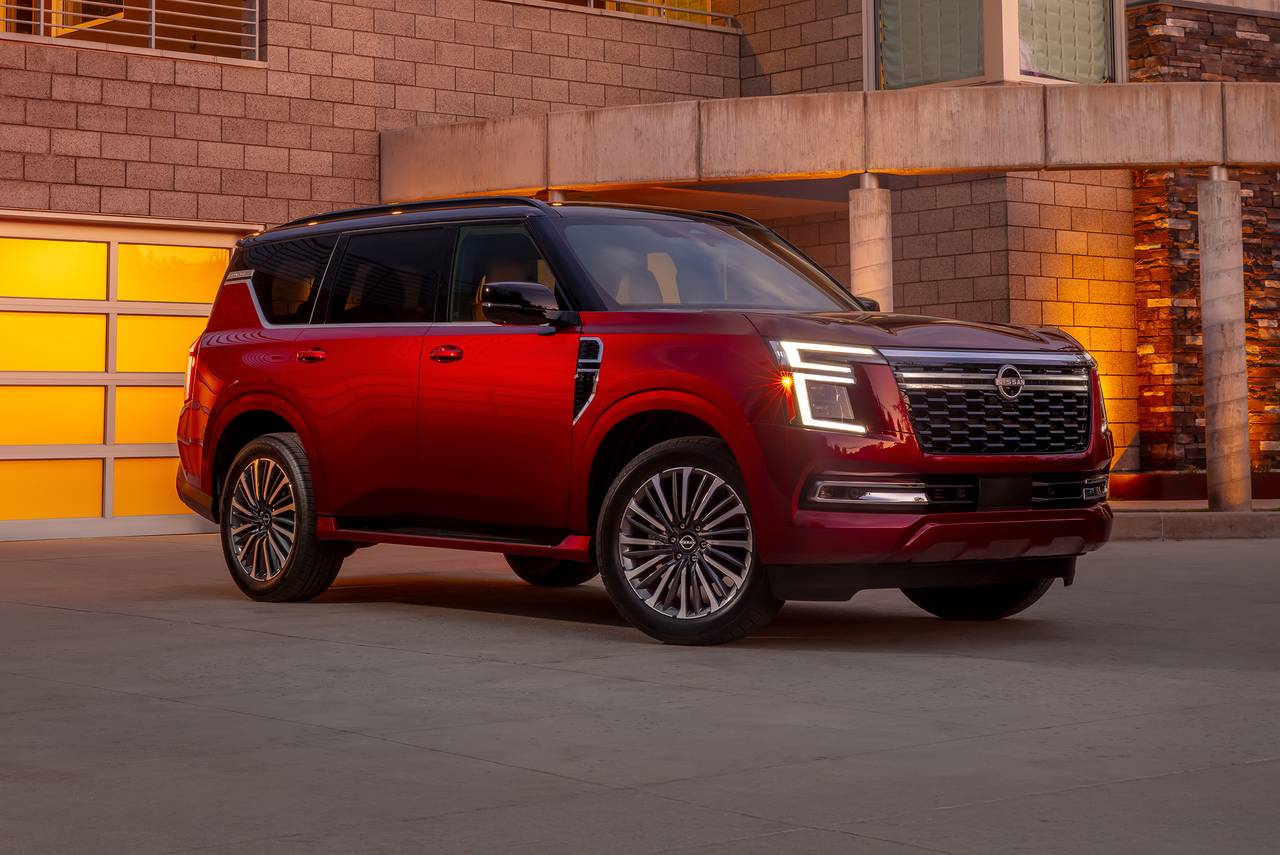
Performance testing reveals significant shortcomings in the Armada’s Wi-Fi capabilities that impact practical usability for most common internet activities.
Urban connectivity typically delivers disappointing speeds of 6-12 Mbps, which is barely adequate for single-user basic internet browsing and insufficient for multiple connected devices or bandwidth-intensive applications.
Suburban and rural performance degrades even further, often becoming completely unusable for anything beyond basic email and messaging. Data plan options for the Armada reflect Nissan’s limited investment in connected services infrastructure and partnerships.
The available plans offer poor value propositions compared to competitive alternatives, with restrictive data allowances and expensive pricing that make regular usage cost-prohibitive for most families. The lack of flexible pricing options and customizable plans further reduces the system’s practical appeal.
Device management capabilities are severely limited in the Armada’s Wi-Fi system, supporting only a small number of simultaneous connections and lacking advanced features like Quality of Service controls, bandwidth prioritization, or parental management tools.
These limitations make the system impractical for families with multiple connected devices or users who require reliable connectivity for business purposes.
The Armada’s connectivity reliability issues compound its other shortcomings, with frequent reports of unexpected disconnections, slow connection establishment, and complete system failures that require vehicle restarts to resolve.
These reliability problems create frustrating user experiences and often lead owners to abandon the built-in Wi-Fi system in favor of alternative connectivity solutions.
4. Mitsubishi Outlander
The Mitsubishi Outlander represents a cautionary example of how insufficient investment in connectivity technology can significantly impact a vehicle’s competitiveness in the modern SUV market.
Mitsubishi’s minimal approach to Wi-Fi implementation reveals the challenges faced by smaller automakers who struggle to match the connectivity investments made by larger competitors with more substantial research and development resources.
The Outlander’s Wi-Fi system utilizes basic, entry-level cellular communication hardware that lacks the advanced features and performance capabilities expected by contemporary users.
This fundamental limitation affects every aspect of the connectivity experience, from initial connection establishment to ongoing performance during active internet usage. The resulting user experience feels significantly behind current market standards and competitive offerings.
Infrastructure limitations extend beyond hardware to include inadequate software implementation that fails to optimize available cellular network resources effectively.
The Outlander’s connectivity system cannot take advantage of modern network features like carrier aggregation, advanced modulation schemes, or intelligent network selection that improve performance and reliability in current-generation cellular networks.
The user interface for managing the Outlander’s connectivity features reflects the overall lack of investment in this technology area. Basic Wi-Fi management functions are buried within confusing menu structures that lack clear organization and intuitive navigation.
Many users report difficulty completing simple tasks like connecting new devices or monitoring data usage due to the system’s poor interface design and limited functionality.
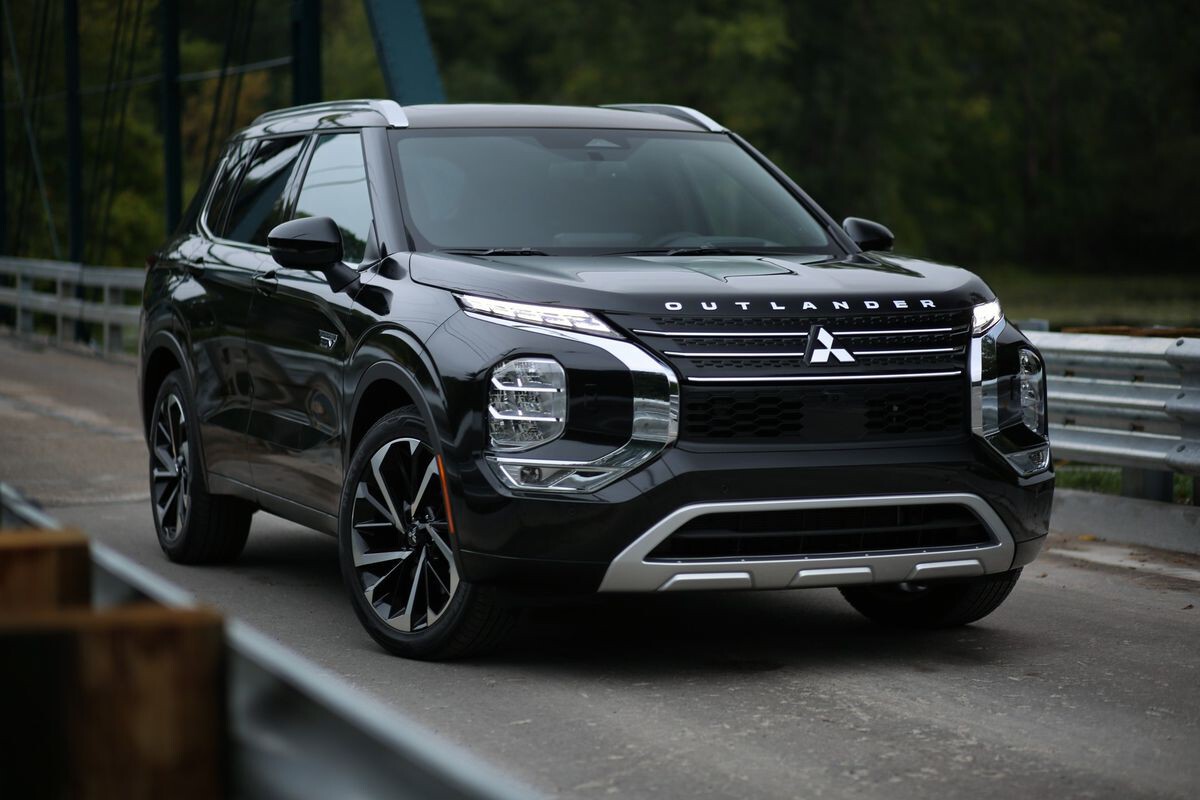
Performance testing consistently demonstrates the Outlander’s connectivity shortcomings across various usage scenarios and geographical locations.
Urban connectivity rarely exceeds 8 Mbps download speeds, which is insufficient for modern internet usage patterns that include video streaming, cloud-based applications, and multiple simultaneous device connections.
Suburban and rural performance becomes even more problematic, often dropping to unusable levels that make the Wi-Fi feature practically worthless.
Data plan options for the Outlander reflect Mitsubishi’s limited partnerships with cellular carriers and minimal investment in connected services infrastructure.
The available plans offer poor value compared to standalone alternatives, with restrictive data allowances and pricing structures that discourage regular usage. The lack of flexible plan options makes it difficult for users to find connectivity solutions that match their specific needs and usage patterns.
Device connectivity limitations severely restrict the Outlander’s practical utility for families or business users who need to connect multiple devices simultaneously.
The system supports only a minimal number of concurrent connections and lacks advanced features like bandwidth management, device prioritization, or usage monitoring that are standard in competitive vehicles.
Reliability issues plague the Outlander’s connectivity system, with frequent reports of connection failures, slow reconnection after signal loss, and intermittent performance problems that occur without clear cause or resolution methods. These reliability concerns make the system unreliable for important communications or time-sensitive internet activities.
5. Basic Trim Toyota 4Runner
The Toyota 4Runner, particularly in base trim configurations, exemplifies how even respected automakers can fall short when connectivity features are treated as secondary considerations rather than integral components of the modern vehicle experience.
Toyota’s conservative approach to Wi-Fi implementation in the 4Runner reveals significant gaps that impact the vehicle’s appeal to families and professionals who prioritize staying connected during travel.
The 4Runner’s Wi-Fi system demonstrates the limitations that arise when connectivity features are added without comprehensive integration into the vehicle’s overall design and user experience strategy.
The basic cellular modem and antenna implementation lacks the sophisticated technology necessary to deliver reliable, high-performance internet access that meets contemporary user expectations and competitive standards.
Signal reception challenges are particularly pronounced in the 4Runner due to inadequate antenna design and poor integration with the vehicle’s structural and electrical systems.
Users frequently report weak signal zones within the passenger compartment and inconsistent connectivity that varies dramatically based on seating position and environmental conditions. These coverage issues make the Wi-Fi system frustrating and unreliable for passengers throughout the vehicle.
The user interface for managing the 4Runner’s connectivity features reflects Toyota’s minimal investment in this technology area. Basic Wi-Fi management functions require navigation through multiple confusing menu levels that lack clear organization and intuitive design principles.
Many users report abandoning attempts to configure or optimize their Wi-Fi settings due to the system’s complexity and poor user experience design.
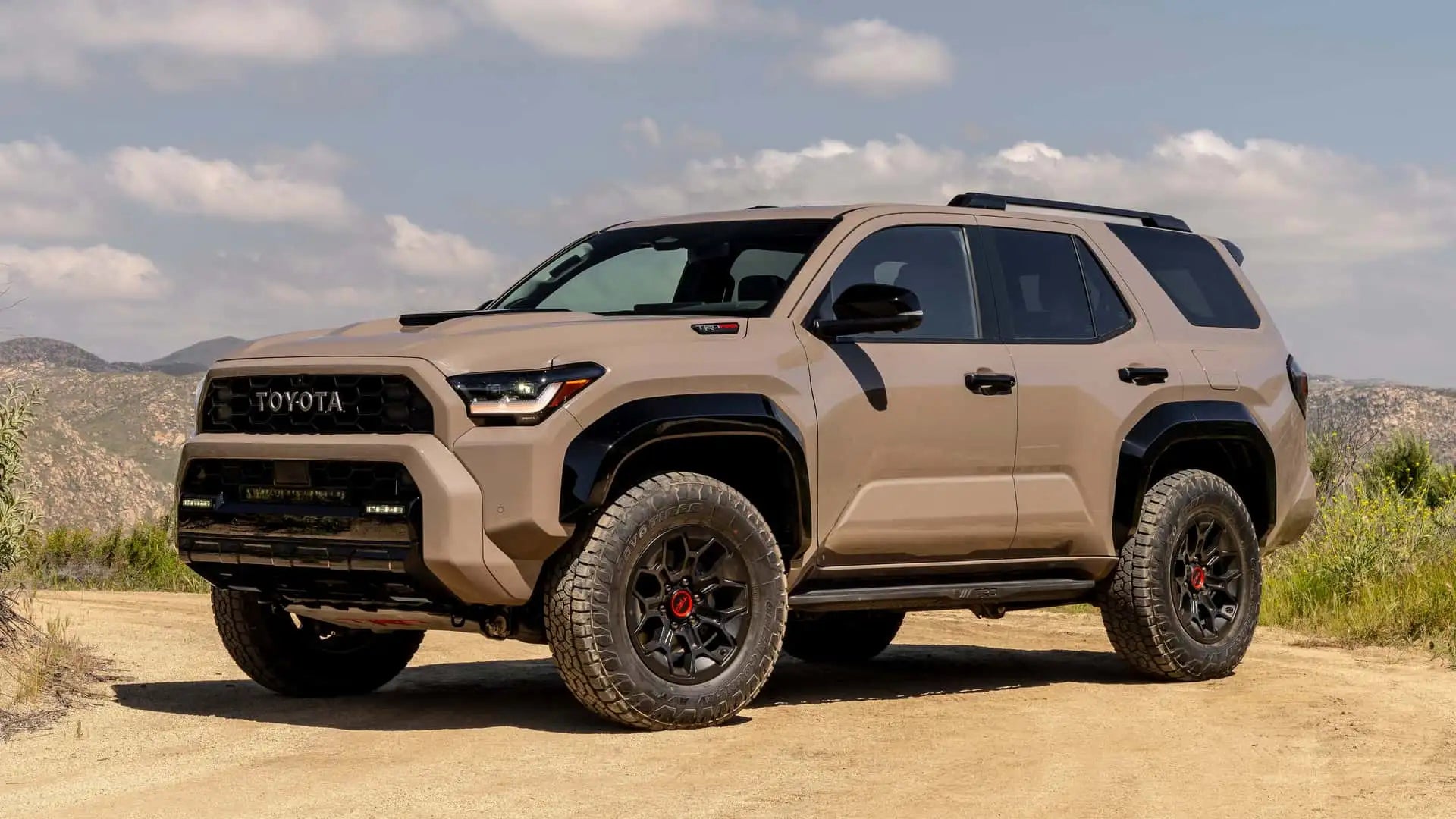
Performance metrics for the 4Runner consistently show disappointing results that fall well below competitive standards and user expectations. Urban connectivity typically delivers inadequate speeds of 5-10 Mbps, which is barely sufficient for basic internet activities and completely inadequate for multiple users or bandwidth-intensive applications.
Suburban and rural performance becomes even more problematic, often dropping to unusable levels that make the feature practically worthless. Data plan options reflect Toyota’s limited partnerships and minimal investment in connected services infrastructure.
The available plans offer poor value propositions with restrictive data allowances and expensive pricing that make regular usage cost-prohibitive for most families. The lack of flexible plan options and customization capabilities further reduces the system’s practical appeal and utility.
Device management capabilities are severely limited, supporting only a minimal number of simultaneous connections and lacking advanced features like Quality of Service controls, parental management tools, or detailed usage monitoring.
These limitations make the system impractical for families with multiple connected devices or users who require reliable connectivity for business purposes.
The 4Runner’s connectivity reliability issues compound its other shortcomings, with frequent reports of unexpected disconnections, difficulty reconnecting after signal loss, and complete system failures that require troubleshooting procedures beyond most users’ technical capabilities.
These reliability problems create frustrating experiences that often lead owners to disable the Wi-Fi system entirely and rely on alternative connectivity solutions.
Also Read: 5 EVs with the Best Charging Port Locations and 5 with the Most Awkward

